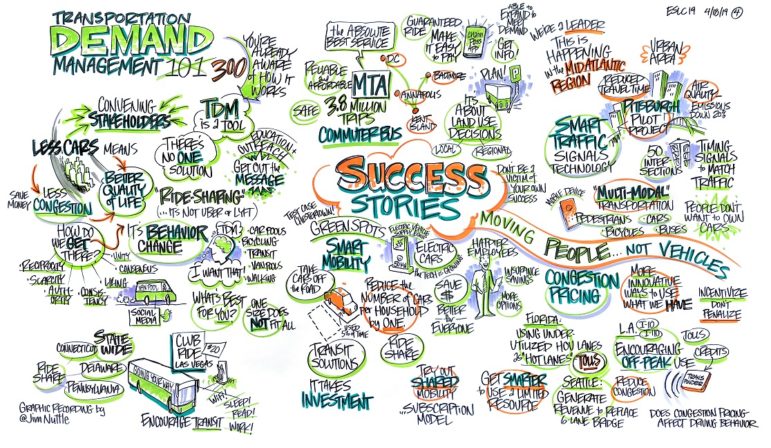By Eastern Shore Land Conservancy
In a time when most of us would acknowledge that there is practically nothing that everyone can agree on, there is one thing – especially here on the Eastern Shore during the summer months – which we would say contradicts that common belief.
Congestion stands as one of the greatest threats to the nation’s economic well-being and quality of life. Maryland residents are no stranger to this threat, especially when scaled down to the regional impact of this dirty word regarding the Chesapeake Bay Bridge.
The structure once symbolized new opportunity and connectivity across the Bay. Now, it symbolizes more of a melting pot for commuters, truck drivers, beach-travelers, and others to sit in traffic together for hours on end.
By now you’ve most likely heard that the Maryland Transportation Authority (MdTA) and the Federal High Administration (FHWA) have narrowed down the prospective third-span choices with corridors identified for new bridge build options.
That all being said, we here at the Eastern Shore Land Conservancy (ESLC) must ask: (1) What can be done to control the growing demand to use the existing Bay Bridge in the interim, and; (2) what can be done to control the induced demand on a prospective future span knowing that it will be easier for more cars to travel across the Bay?
The good news is, the platform for solutions rests on the backs of the people, and rather than a burden, ESLC sees a major opportunity. As members of the business community, conservation groups, or any other label you identify with, we must understand that our collective decisions will add to the congestion just as easily as our decisions will reduce it. Given that power, we need to come together and work with state and local governments to create solutions that benefit us all.
Think about it: Whenever emergency responders leave for a call to save someone in need, it is not the government they sit behind in traffic, it is US – the citizens and taxpayers of this state. We decide to collectively move to the side so they can pass and fulfill their sworn duty to protect those in need.
Travel demand management
As a proposed solution, rather than a new vehicle-oriented Chesapeake Bay Bridge crossing, ESLC strongly supports the research and immediate implementation of aggressive travel demand management (or TDM) strategies to more easily cross the current Chesapeake Bay Bridge spans. More simply put – why not make the absolute best of what we currently have using technology and smart infrastructure-based planning, prior to embarking on a project that is literally years and billions of dollars away from happening?
We need relief from congestion now.
Based on ESLC’s 19th Annual Planning Conference “Congestion Ahead: Rerouting…” which convened industry leaders and stakeholders, we believe the following traffic mitigation efforts can have an impact this year:
- High-speed (Cashless) Tolling: There is a proposal in the works and its implementation would work immediately.
- Bus Rapid Transit (BRT): BRT and expanded use of commuter buses has been encouraged by the state and we can come together to make it work effectively.
- Off-Peak Toll Reductions: Off-peak tolling would smooth out demand curve to make the most of existing infrastructure during times where traffic can flow with minimal delay.
This is not rocket science. We need solutions that save money, provide enough time to get to work and home on time, and keep the public aware and prepared for ever-changing traffic conditions in real time. Approaches like the ones listed above have proven track records of helping traffic move more smoothly.
Quoting a representative from FHWA during Congestion Ahead: Routing…, a common sense solution would have the focus to “Move more people, not more cars.”
People are the foundation of transportation demand management, and the ability to move more people, not more cars, begins with us. As you reflect and digest the graphic below from discussions during Congestion Ahead, strongly consider how the comments, phrases, and illustrations resonate with you and the daily travel choices you make. Stay tuned to this ongoing discussion, as ESLC will follow up with a deeper dive on the ability for TDM strategies – more specifically, the three mentioned above along with other forward leaning solutions – to move more people, not more cars, on the Chesapeake Bay Bridge.
Eastern Shore Land Conservancy is committed to preserving and sustaining the vibrant communities of the Eastern Shore and the lands and waters that connect them.

Graphic by Jim Nuttle (@jimnuttle) for ESLC




If you’re suggesting off-peak toll reductions only, then that solution is a partial one. You also have to have higher peak tolls to actually reduce traffic during peaks and move it to off peak. Of course daily commuters would have to be accomodated. Use the price mechanism fully. If not, at least do away with cash tolls; that would speed the process.
This article, as do others, mention the erroneous concept of “induced demand.” There is no such thing; it is “induced traffic,” resulting from the lower price of travel as supply (another bridge) expands capacity.
How would buses help in getting to Ocean City ? One still needs a car to get around…
Isn’t it funny how the problem disappears one the summer ends ?
Also, let’s not forget Governor Schaefer’s ” Reach the Beach” program that may have exacerbated the problem…
And why not travel overnight or in the very early morning to avoid the other “lemmings” that blindly and mindelessly drive at the same time ?